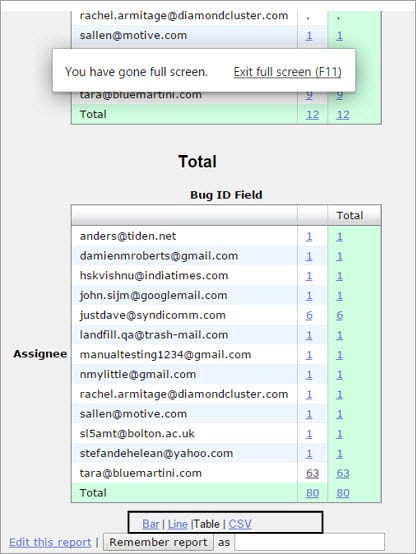

And with over 1.5 million bugs in the system, scaling was no longer an option.īecause Bugzilla had a database and access control list, it could be used to track both bugs and tasks. What Humphries inherited when she arrived almost four years ago was a system that had been adapted and customized in ways that worked for the immediate needs of various groups throughout Mozilla, but made it impossible to scale. Modernizing Bugzillaīut before the BugBug could be created, Bugzilla itself needed some fundamental changes.
#Bugzilla tutorial how to#
The challenge, she said, is how to use machine learning wisely. It’s not like they could dump in data from the 1.5 million bugs and simply train off of that. Not all people who submit bugs are engineers, so there’s a danger in training BugBug on bugs that were written by people who come from different backgrounds, said Humphries. “People just weren’t picking up bugs that were general,” said Humphries.Ĭastelluccio wrote in the “ Teaching machines to triage Firefox bugs” post, that “To help get bugs in front of the right Firefox engineers quickly, we developed BugBug, a machine learning tool that automatically assigns a product and component for each new untriaged bug.” Sixty percent of the bugs are tagged in a general component by users submitting the bugs, but bugs were only being picked up to be worked on from a specific component. feature requests, or meta bugs, or refactorings, and so on.”īugzilla uses a classification system for bugs, which tag every bug. “This makes it hard to know which bugs are bugs and which bugs are not bugs but e.g. “Bugs are used to track anything, from ‘Create an LDAP account for contributor X’ to ‘Printing page Y doesn’t work,’” He wrote. Bugzilla is a 20-year old bug tracking system where engineers and Firefox users can submit bugs they find.īugBug, Mozilla’s new ML platform, automatically assesses each new bug and automatically assigns it to the correct product and component. This is just the first phase of this work.īugzilla is a noisy data source, wrote Marco Castelluccio on his blog at GitHub titled “It’s not a bug, it’s a feature.” Financial Services: Financial services companies use RPA for foreign exchange payments, Automation of account opening and closing, and audit request management.Adding machine learning (ML) to Bugzilla is solving several problems, said Emma Humphries, Bugmaster at Mozilla, the organization behind the Firefox open source web browser.Human Resources: It helps you automate HR functions, including onboarding and offboarding, staff updates, and submission procedures of schedules.Healthcare: It can be used by medical organizations for handling patient records, account management, reporting, and data analytics.Customer Services: By support center duties, can assist businesses to deliver improved customer service, including e-signature verification, scanned records uploading, and data verification.

Accounting: For general accounting, operational accounting, transaction, and reporting.Here are some important applications of RPA: Transfer data between disparate and legacy systems.



 0 kommentar(er)
0 kommentar(er)
